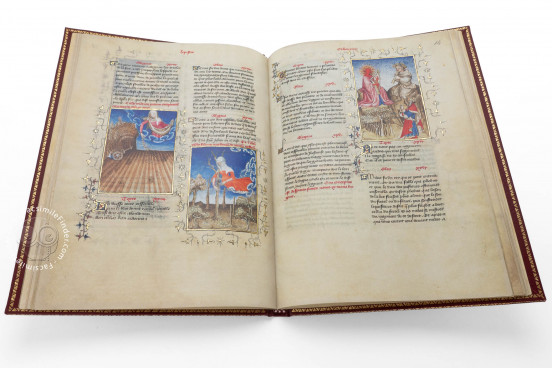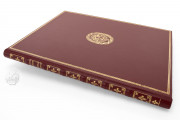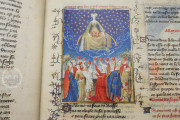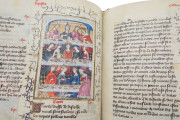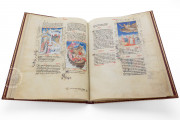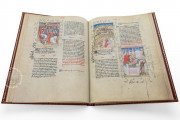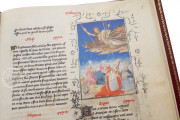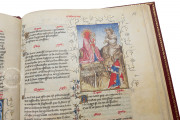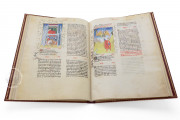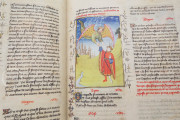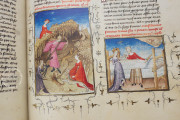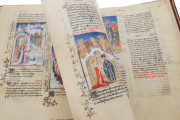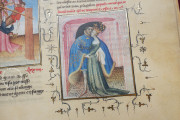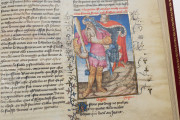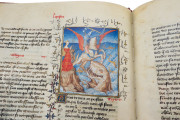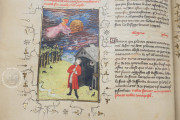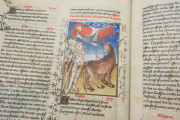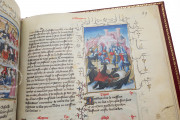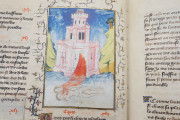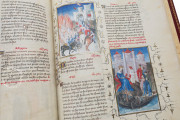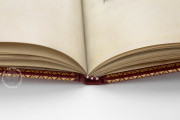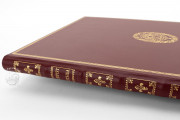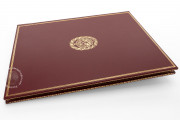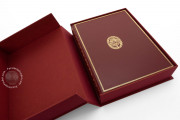Made in 1407-1408 in Paris, the Paris Epistle of Othéa manuscript is one of five codices of Christine de Pizan's works prepared under her supervision for Louis, Duke of Orléans, to whom the manuscript's text is dedicated. Louis, however, was assassinated before the manuscript's completion, and the manuscript found itself in the library of the greatest collector of luxury manuscripts of his time, Jean de France, Duke of Berry. Its 101 miniatures illustrate the book's poems in the voice of Othéa, the goddess of Prudence.
The paintings are the work of the Master of the Epistle of Othéa (named for this book) and assistants, as well as the Saffron Master (named for the yellow leaves on his depictions of trees), and the Egerton Master (who completed just two miniatures, on fols. 41r and 46r).
Master Artist in Charge
The Master of the Epistle of Othéa entered Christine's service around 1403. He is of Lombard origin and was influenced by the work of Giovannino de' Grassi. His interiors often feature checkered tile flooring, for example, in the miniatures of King Athamas (fol. 10r) and Juno Advising Semele (fol. 29v). He worked on this manuscript with assistants and supervised the work of and provided underdrawings for some of the miniatures by the Saffron Master (fols. 18v-23v, 24v, 41v, and 43r-44v).
Close Collaborations
Not only did the manuscript's illuminators work in close collaboration, but they—or at least the Master of the Epistle of Othéa—worked with Christine in designing the program of illustrations. The author also directly oversaw the work of the principal scribe and occasionally supplied catchwords—signaling the first word of the following page—in the lower margins (fols. 24v and 31v).
Moralizing History
Christine's text is a series of 100 French poems about a person or event from ancient mythology framed as exempla (anecdotes meant to educate) in a lengthy letter to the fifteen-year-old Hector, the Trojan prince at the center of Homer's Iliad. Christine provides a Christian interpretation for each.
The visualizations of the stories from ancient mythology point to their Christian moralizations. For example, the Master of the Epistle of Othéa's portrayal of Cassandra praying in a pagan temple has her dressed like a contemporary nun and kneeling before an altar in a distinctly church-like setting. Similarly, the image of Neptune guiding a ship in a stormy sea is reminiscent of representations of Saint Nicholas (both on fol. 16v).
Poetry and Prose
The Paris manuscript is written in two columns in the French Bâtarde script favored for vernacular texts at the time. Each four-line poem is followed by two texts (one called a "gloss" and the other an "allegory") explaining what can be learned from the myth to improve behavior and character. A quotation from the Christian Bible or doctrine (in red) follows.
In a Distinguished Collection from an Early Date
The manuscript was acquired by Jean de France (1340-1416), Duke of Berry, around 1408. It descended to his daughter, Marie de Berry (1375-1434), Duchess of Auvergne and consort of John I, Duke of Bourbon. It remained in Bourbon hands until it was seized in 1523 by Francis I (1494-1547), King of France, who kept it in his personal library.
From the French Royal Library, the book eventually entered the Bibliothèque nationale (since 1995, Bibliothèque nationale de France). The current binding of red morocco with the French royal coat of arms dates from the seventeenth or eighteenth century.
We have 1 facsimile edition of the manuscript "Paris Epistle of Othéa": Ratschläge für einen jungen Helden. Der Othea-Brief der Christine de Pizan facsimile edition, published by Mueller & Schindler, 2024
Request Info / Price

